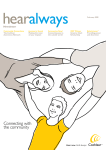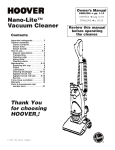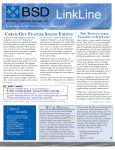Download The Practical Facebook Marketing Guide for
Transcript
LIMITED EXCERPTS FROM FACELIFT: The Practical Facebook Marketing Guide for Service Professionals LIMITED EXCERPTS 1 LIMITED EXCERPTS FROM FACELIFT: The Practical Facebook Marketing Guide for Service Professionals LIMITED EXCERPTS FROM facelift ™ The Practical Facebook Marketing Guide for Service Professionals First Edition Dedication To my darling husband, Chris Davis, whose support and encouragement are essential to everything that I do. Special Thanks Most heartfelt thanks to Chantal Weedman and Tom Foster for their contributions and support throughout the process of creating this book. Copyright © 2009 by Anne Mischelle Weedman-Davis All rights reserved. No part of this book may be reproduced, stored in a retrieval system, or transmitted by any means, electronic, mechanical, photocopying, recording, or otherwise, without written permission from the author. Printed in the United States of America. Facelift is a trademark of Anne Mischelle Weedman-Davis. Facebook is a registered trademark of Facebook, Inc. LIMITED EXCERPTS 2 LIMITED EXCERPTS FROM FACELIFT: The Practical Facebook Marketing Guide for Service Professionals Table of Contents Excerpts From Forward 5 Excerpts From Chapter 1 – Facing the Future: Introduction to Social Networking 6 What is Social Media & Social Networking? ............................................................................... 7 The Social Network Effect: Word-of-Mouth at Cyber Speed ..................................................... 9 Viral Marketing vs. viReal Marketing ........................................................................................ 10 Social Media Is Changing How We Search ................................................................................ 12 How Facebook Is Replacing Some Specialized Internet Services ............................................. 13 Not Just For Kids Anymore ........................................................................................................ 13 Bottom Line............................................................................................................................... 14 Excerpts From Chapter 2 - Why You Need To Be On Facebook 15 Excerpts From Chapter 3 - Facing the Mirror: Social Networking Marketing Objectives 17 Excerpts From Chapter 4 – Face the Facts: An Introduction to Facebook 20 Facebook: Core Components .................................................................................................... 20 Profile .................................................................................................................................... 21 Wall ....................................................................................................................................... 21 Friends................................................................................................................................... 21 Status .................................................................................................................................... 22 News Feed ............................................................................................................................. 22 Excerpts From Chapter 5 - Best Face Forward: Creating & Managing Your Facebook Profile 24 Excerpts From Chapter 6 – The Writing Is On the Wall 25 Excerpts From Chapter 7 – About Face: Managing Your Facebook Settings 26 Excerpts From Chapter 8 – Facing Your Friends: You Gotta Have Friends 27 How Many Facebook Friends Do You Have? ............................................................................ 27 Excerpts From Chapter 9 – Face To Face: Interacting With Your Friends 29 Balancing Your Facebook Interactions...................................................................................... 30 Ice-Breaker Ideas .................................................................................................................. 33 LIMITED EXCERPTS 3 LIMITED EXCERPTS FROM FACELIFT: The Practical Facebook Marketing Guide for Service Professionals Excerpts From Chapter 10 - Changing the Face of Email Marketing 35 Messaging (email) ..................................................................................................................... 35 Facebook’s Walled City ......................................................................................................... 35 Messages Check Out; But They Never Leave. ....................................................................... 36 Excerpts From Chapter 11 – Facing The Sharks: Facebook Applications 38 Excerpts From Chapter 12 - Two Faces: Pages vs. Groups 39 Excerpts From Chapter 13 – Facing The Street: Facebook Advertising 40 Excerpts From Chapter 14 – Promoting Your Facebook Persona & Pages Outside of Facebook41 Excerpts From Chapter 15 – Top Ten Relationship Mistakes People Commonly Make On Facebook 42 Excerpts From Chapter 16 - The Ten Things Business Owners Don't Do On Facebook....But Should. 44 Excerpts From Chapter 17 – Measuring Return on Your Investment in Facebook 46 Influence ............................................................................................................................... 46 Traffic .................................................................................................................................... 47 Sales/Revenue....................................................................................................................... 47 Qualitative Measures ................................................................................................................ 47 Buzz ....................................................................................................................................... 47 Business Insight and Relationships ....................................................................................... 48 Chapter 18 - Facebook Culture: Things to Do and Things to Avoid – No Excerpts Available 49 Chapter 19 - Slap In the Face: Getting Kicked Off Facebook– No Excerpts Available 49 Chapter 20 –Facebook Feature Glossary, Social Networking Vocabulary & Facebook Slang – No Excerpts Available 49 Excerpts From Author Bio 50 Index 51 LIMITED EXCERPTS 4 LIMITED EXCERPTS FROM FACELIFT: The Practical Facebook Marketing Guide for Service Professionals Excerpts From Forward The purpose of this book is to give business professionals practical strategies and simple tactics so that they can use Facebook™ as a marketing platform for communicating and building relationships with customers, potential customers, and referral sources. This book is not intended to be the missing Facebook user's manual. Part of the beauty of Facebook is that its features are usually self explanatory and do not require instruction. At various points in the book, I will explain how particular features work and give relevant examples. However, the majority of the time I will not go into that level of detail for specific features. Instead, I will simply share practical tips on using Facebook as a relationship-building tool. LIMITED EXCERPTS 5 LIMITED EXCERPTS FROM FACELIFT: The Practical Facebook Marketing Guide for Service Professionals Excerpts From Chapter 1 – Facing the Future: Introduction to Social Networking No communication network, marketing channel, or advertising medium has ever represented a greater business opportunity for those offering professional services than does today’s social networking platforms such as Facebook. In the coming years, Facebook and other social networking sites are going to completely change the way professionals promote their services. Facebook and some other social media services are ideal for promoting service-based businesses such as: Doctors Lawyers Accountants Business Consultants Real Estate Agents Stock Brokers/Investors Personal Chefs Caterers Mechanics General Contractors Computer Techs and Network Specialists Baker/Cake Decorator Personal Trainers Coaches/Instructors or Tutors Architects Multi-Level Marketing Professionals Professional Speakers Interior Designers Wedding/Event Planners And many other professional services businesses For service professionals, there are two important business truths: (1) having a good relationship with the customer is a key component to success; and (2) most new customers/clients have come as a result of word-of-mouth referrals. Facebook allows your customers/clients and referral sources to get to know you on a more personal level which helps them to build a preference for you. Facebook enables those customers/clients to share their experience of you with their friends, relatives, co-workers, and business contacts in a way that takes word-of-mouth advertising to an entirely new level. Facebook is about individuals and is designed to enable them to easily connect and communicate with one another, share their experiences, and create/build relationships. On the main Facebook entry/login page, the company says it all: Facebook has been designed to help LIMITED EXCERPTS 6 LIMITED EXCERPTS FROM FACELIFT: The Practical Facebook Marketing Guide for Service Professionals you "connect and share with people in your life".1 Social media sites such as Facebook are enabling people to have frank, honest conversations about everything including products and services. It is changing how businesses market to and communicate with their customers. As a person who offers a professional service, you must come to the realization that you are the product, your name is the brand, and your face is the logo. When people engage your services they are entering into a relationship with you, not your business or office. Your personality, your values, your education, your expertise, and your communication style are all critical components that a potential client or referral source needs to consider before making the decision to hire or recommend you as opposed to someone else. Theses ideas, experiences, and traits are difficult to communicate in a business card design, yellow pages ad, or brochure. Websites are only slightly better as they are, in most cases, still a one-way communication stream. Facebook enables you to create a one-to-one electronic relationship that has not been possible until now. What is Social Media & Social Networking? Social media sites allow “regular people” to create and exchange information and content. Social media sites include: Internet forums, blogs, wikis, podcast sites, photo and video sharing sites, group sites, etc. For example, YouTube™ is a social media site that allows people to share videos. Flickr™ is a social media site that allows people to share images. Blogging is considered a social medium as it allows people to share their original content such as articles. Social media is changing how people search for, find, read and share information, news, product recommendations, and service experiences. Some have described social media as the fusion of sociology and technology. Social networking sites, such as Facebook and MySpace™, use the internet to facilitate and 1 Facebook company tagline as displayed on its homepage at www.Facebook.com. LIMITED EXCERPTS 7 LIMITED EXCERPTS FROM FACELIFT: The Practical Facebook Marketing Guide for Service Professionals manage conversations and information exchange making them more efficient. Social networking sites incorporate many of the specialized features of other social media sites and integrates them with contact and communication management features. Social networking changes business communications (such as advertisements, brochures, web pages, etc.) that were once a monologue (one-to-many) into a multi-layered dialog (one-to-one; one-to-many; many-to-one). In short, social media and social networking has sparked an information revolution and has liberated or democratized information by transforming the average person from a content consumer into a content publisher. Online Social Media Types of Social Media Blogs & Microblogs Internet Forums Wikis Podcast Sites Photo Sharing Sites Video Sharing Sites Email/Chat Music Sharing Online Groups Examples of Social Media Facebook, MySpace, LinkedIn (networking) Flickr (photo sharing) YouTube (video sharing) Twitter (micro-blogging) Yelp.com (product reviews) Wikipedia (reference) Meetup.com (events) Google Groups, Yahoo Groups (groups) Nielsen Research reports that two-thirds of all online users visit social network websites and blogs and that networking and blogging are now the fourth most popular online activity. It is even more popular then sending personal email messages and is growing twice as fast as any other online activity. Two-thirds of all internet users visit social networks and blogs. Gen Y-ers2 have been the early adopters of social media. As they mature and enter the work force and as their buying power increases, businesses will have to change their marketing methods and channels to reach them and remain relevant to them. 2 Generation Y, also known as The Millennial Generation, is a general term used to describe those born between 1980 and 1992. LIMITED EXCERPTS 8 LIMITED EXCERPTS FROM FACELIFT: The Practical Facebook Marketing Guide for Service Professionals Social networking also facilitates community. It allows users to easily connect and communicate with people with whom they share a “real-world” relationship. It fosters connections between individuals and/or groups that share a common interest or perspective, and it draws upon the experiences of those who have used specific products or services. Many have compared social networking to a cocktail party—the atmosphere is relaxed; you can easily meet new people; it is easy to start conversations; you can listen to other conversations; and you can just jump in to ask or answer questions. All of these dynamics create a unique marketing opportunity for service professionals such as lawyers, doctors, consultants, etc. The Social Network Effect: Word-of-Mouth at Cyber Speed The definition of social is friendly, public interaction. And a network is a system of connections. By their very nature, social networks powered by today’s technology enable us to share information and ideas on such an exponentially enormous scale that it makes old-fashioned (oral) person-to-person, word-of-mouth communication seem a little bit like cave drawings. The Social Network Effect is the ability of an idea to be shared with a larger group of individuals (or groups) through tentacle-like connections between those individuals. The social network effect is word-of-mouth at cyber speed. For example, Kathy, John, Tom, and Sarah share a very brief online conversation (a series of posts) about their favorite restaurant, St Clouds3’. Other than one another, none of them shares any common online Friends in Facebook. Because this conversation took place on a social media site such as Facebook, all of their collective Friends can see the conversation and, if they choose, offer their opinions. Each time someone joins the conversation; all of their Friends can see and join the conversation as well. Very quickly, this conversation between four Friends can grow to be a conversation with dozens of participants. At the very least, dozens of people can easily, and without any guilt, electronically eavesdrop on the conversation. So Kathy’s ravings 3 St Clouds is a favorite restaurant in our Seattle neighborhood. LIMITED EXCERPTS 9 LIMITED EXCERPTS FROM FACELIFT: The Practical Facebook Marketing Guide for Service Professionals about St. Clouds’ delicious chocolate dessert have the potential to be seen by hundreds of people. And the fact that this endorsement comes from a friend or a friend-of-a-friend makes it all the more meaningful to anyone who reads it. Figure 1 The Social Network Effect Viral Marketing vs. viReal Marketing Industry analysts and the media have made much of the ability of social networks to encourage and facilitate viral marketing. Viral marketing is the voluntarily spread of ideas (articles, videos, websites) from person-to-person (typically through email) that actually helps to market your business. No TV, radio, or magazine ads—just one person sharing an item or idea with another. But something that is viral, like a video of a laughing baby or prisoners dancing to Michael LIMITED EXCERPTS 10 LIMITED EXCERPTS FROM FACELIFT: The Practical Facebook Marketing Guide for Service Professionals Jackson’s Thriller that have been viewed a million times, is not necessarily viral marketing unless it promotes a product, company or cause. In recent years, viral marketing has become the ‘Holy Grail’ of marketing campaigns. Every ad agency, PR firm, or Internet SEO4 company is trying to dream up the next wildfire-like campaign that spreads at little or no cost. For example, marketing messages have been subtly and not so subtly embedded into hundreds of tasteless, sophomoric low production value videos with the hope that they will be edgy enough to get passed along or at least attract some controversial media attention that will drive sales, website visitors, etc. Most viral marketing has become about as real as bad reality television. It is too contrived and consumers are getting wise and disengaging. Social networking sites like Facebook facilitate what I call viReal marketing. For no motive other than to share their own experiences with their friends, people are promoting the products that they like and giving candid feedback and information about how they use products and services. The words that they use are not carefully contrived by copywriters and marketing experts sitting around a conference room table. The descriptions people use to share their experiences are not designed to position the product to align with the needs of a particular demographic – people are just offering real, honest experiences. Through the social networking effect, these honest exchanges are becoming as viral as any marketing campaign— thus viReal. Companies cannot control these messages or ideas and are quickly trying to create ways to capture and analyze this information and use it to drive product development and creative content for marketing campaigns. In the world of social networking, positive viReal marketing should be the goal of any company that promotes products and services. “The direct unfiltered brutally honest nature of much online discussion is black gold…Texas tea to companies that want to spot trends or find out what customers really think.”5 4 Search engine optimization 5 The Economist, March 11, 2006 LIMITED EXCERPTS 11 LIMITED EXCERPTS FROM FACELIFT: The Practical Facebook Marketing Guide for Service Professionals Social Media Is Changing How We Search A research study reported that email messages from someone you know are the most trusted source of information. The study also found that these personal endorsements are viewed as more reliable than online product reviews or Google™ search results. Social media is rapidly changing the way people search for information on the Internet because it is as trusted as an email from a friend. It is also much easier to gather and review information from multiple trusted Friends. With greater frequency, people are by-passing search engines and posing product and service questions directly to their own network of ‘social media friends’ in order to get more personal recommendations. Consumers will rely on these recommendations from Friends as they make decisions. Socially connected consumers strengthen our position as a buying public and shift the power away from large corporations and their carefully-crafted marketing messages and advertising campaigns. The first generation of Internet searching was solely based on keywords. How relevant a page was to a search was based on how often the search term appeared on the page. The second generation is/was about content and the site’s relationship to other websites. A link to a site is more or less considered to be a “vote” for the site. The next generation of social searching is about how the information relates to you, your Friends, your interests, your location, etc. As an example, a person living in Atlanta who needs to find a dentist would never think of picking up the phone and calling dozens of Friends, one at a time, to inquire about dentists in the area – it would take too much time. Instead, this person might use an internet search engine to search for “Atlanta dentist” and receive pages of search results: websites for local dentists, dentist referral networks, and probably even some dentists that are not in the Atlanta area. But that would all be impersonal information. Picking a dentist from that list would have nothing to do with who offered the best service. Instead, it would be based on an evaluation of who had the best-looking web page, appeared in the top of the search results, or had an ad that appeared close to the top of the page. The person searching might visit a dentist referral LIMITED EXCERPTS 12 LIMITED EXCERPTS FROM FACELIFT: The Practical Facebook Marketing Guide for Service Professionals website that posts ratings and testimonials, but those ratings and testimonials come from faceless strangers rather than from Friends whose opinions the searcher knows and trusts. Using a social media site like Facebook, that same person can post a simple question, “Does anyone know of a good dentist in Atlanta’s Buckhead neighborhood?” Within a very short amount of time, the searcher can receive personal recommendations from Friends who have had real experiences and have real relationships with dentists in the area. Social searching bypasses the traditional marketing systems and messages in favor of a more sincere, honest, and natural way to find the products and services that you are seeking. And in the case of services, it allows consumers/clients/customers to build direct relationships with the professionals who are delivering those services. How Facebook Is Replacing Some Specialized Internet Services The combination of Facebook’s features and applications turns it into a “one-stop shop” for many internet communication and information sharing services. This is putting many once very successful online businesses in serious jeopardy. For example, Facebook is now the number one photo sharing platform dominating established companies such as Flickr, Shutterfly, and SnapFish. And Facebook’s Event application sends more than three times the number of invitations as leading specialized invitation sites such as eVite. As the number of Facebook users and the number of more specialized applications grow, more and more web services will be available through the Facebook platform and more businesses will be threatened. Not Just For Kids Anymore Don’t fool yourself into thinking that Facebook and other types of social media are just for kids. LIMITED EXCERPTS 13 LIMITED EXCERPTS FROM FACELIFT: The Practical Facebook Marketing Guide for Service Professionals According to a recent Forrester Research report, more than 60 percent of Baby Boomers consume socially-created content. The report states that 62 percent of Boomers aged 53-63 and 66.7 percent of Boomers aged 43-52 say that they read blogs, listen to podcasts, watch online videos, and consume other types of social content. Though they generally do not create as much content as younger members, this group wields much more purchase power and has a greater disposable income. In fact, the fastest growing group of Facebook users is age 35 and up. Bottom Line If you are going to continue to attract and communicate with your customers online, you will need to harness the power of social media by beginning to change how you market your business and communicate with your customers and referral sources. If you are one of those service professionals or business owners who regrets not jumping on the Internet back in the mid-1990s; who didn’t get a website until well after 2000; and who feels left behind by the technology age, now is the time to act. The bottom line? It is time to get on Facebook. LIMITED EXCERPTS 14 LIMITED EXCERPTS FROM FACELIFT: The Practical Facebook Marketing Guide for Service Professionals Excerpts From Chapter 2 - Why You Need To Be On Facebook 1. Your friends, family and neighbors are already on Facebook. 2. Their friends’, family and neighbors are already on Facebook. 3. Your customers and potential customers are already on Facebook. 4. Your customers/potential customer’s friends are already on Facebook. 5. Your business associates are already on Facebook. 6. Your business associates’ friends are already on Facebook. 7. Your referral sources are already on Facebook. 8. Your referral sources' friends are already on Facebook. 9. Members of the media are already on Facebook. 10. Members of the media have friends who are in the media and they are on Facebook too. 11. All of the above are connecting and communicating using Facebook every day. If you are not on Facebook then you are not a part of the conversation and are missing business opportunities. But wait, there is more… 12. Your competitors are creating Facebook Pages that are indexed by the search engines and ranking high in search results (Google, Yahoo, Bing, etc.). 13. Your customers are creating and joining Facebook interest Groups that are relevant to your business. 14. Your referral sources are creating Pages and Groups that are relevant to your business and/or industry. LIMITED EXCERPTS 15 LIMITED EXCERPTS FROM FACELIFT: The Practical Facebook Marketing Guide for Service Professionals 15. Your friends, family, customers, contacts, referral sources, etc. are starting to center their messaging (email) activity in their Facebook Inbox rather than their other email accounts/addresses. LIMITED EXCERPTS 16 LIMITED EXCERPTS FROM FACELIFT: The Practical Facebook Marketing Guide for Service Professionals Excerpts From Chapter 3 - Facing the Mirror: Social Networking Marketing Objectives You have had a glimpse of the significance of social networking and Facebook in particular, and you have made the decision to include Facebook in your marketing mix6. Before you begin to undertake this new marketing adventure, you need to have a basic idea of what you want to accomplish. Quite simply, you need a plan. It does not need to be a lengthy, academic marketing plan. But it’s a good idea to at least determine your main goals and objectives. In my experience, the most successful businesses have a clear vision of where they are going and how there are going to get there. The ones that don’t do well either have no plan, the plan changes every day, or the company gets locked into ‘analysis paralysis’ and can never agree on what the plan actually should be. Long before I started using Facebook as a marketing platform for my husband’s law firm, I had four basic marketing objectives. One of the things that initially attracted me to Facebook was its potential to drive all four. Those four objectives are: Build lasting relationships and stay “top of mind” with clients (past, present, potential) and referral sources. Communicate, educate, and inform. Knowledgeable clients/business partners are more satisfied and thus are better referral sources. Distinguish and differentiate the professional and the practice from competitors. Location, location, location – be easy to find on the Internet. Human beings crave interaction with and do business with people they know, like, and trust. But with traditional communication and marketing mediums, keeping in touch with clients and 6 Facebook should be part of an overall marketing plan. I do not recommend that you use Facebook exclusively to market your business….not yet. LIMITED EXCERPTS 17 LIMITED EXCERPTS FROM FACELIFT: The Practical Facebook Marketing Guide for Service Professionals referral sources is challenging enough without also being concerned about staying “top of mind.” Sending thank you notes, letters, newsletters, postcards, emails, gifts, etc. is time consuming and potentially expensive. And if you are not communicating on a regular basis, then you will not be “top of mind” when referral opportunities present themselves. The good news is regular communication is much easier using Facebook. Do you know what all of your old high-school and college friends are up to these days? If you live and work in the same community where you grew up or went to school, those friendships could be a good source of business. When was the last time you spoke to any of the people who were your customers five years ago? When was the last time you had lunch with that friend you worked with five or ten years ago? Are you having trouble finding the time to attend networking groups, professional organization meetings, and community or chamber meetings? Each of these represents marketing opportunities lost. These relationships are much easier to manage and maintain using Facebook. You want to use Facebook to stay in touch with old friends, family, clients (past, present, potential) and referral sources. One of your key Facebook activities is going to be building your ‘friend’ list. You will be locating and reconnecting with people you know and making new ‘Friends’ with people who have similar interests or serve the same customers. Both of these groups represent good referral sources or potential customers for your business. Getting in touch and staying in touch is key to building a lasting relationship. What good is a Rolodex™ full of business cards or an address book full of names and numbers if you don’t regularly communicate with the people you know? Keeping your friends informed of what you are up to professionally and personally will also be a core Facebook activity. You will want to share professional successes, personal stories, and keep your friends educated and informed about issues within your industry. Through the information in your Facebook Profile, the information you post, and the pages or groups you create, you are going to help paint a LIMITED EXCERPTS 18 LIMITED EXCERPTS FROM FACELIFT: The Practical Facebook Marketing Guide for Service Professionals complete picture of who you are as a person and as a professional. Because the bottom line is that people do business with people. With over 200 million existing members and 500,000 new members each day, there is no doubt that at least some percentage of your customers, potential clients, and referral sources are on Facebook already. And those numbers will keep growing. You want to be where your customers are and you want to be easy for them to find when they are looking for your services. Being on Facebook is as important as being on page one of Google search results when someone is looking for your services, and in the future it may be even more important. Keep the old real estate adage in mind: “Location, location, location.” LIMITED EXCERPTS 19 LIMITED EXCERPTS FROM FACELIFT: The Practical Facebook Marketing Guide for Service Professionals Excerpts From Chapter 4 – Face the Facts: An Introduction to Facebook Facebook was founded in 2003 by Harvard University student Mark Zuckerberg and his roommates, Dustin Moskovits and Chris Hughes. The site, originally called Facemash, placed photos of fellow students side-by-side and asked visitors to choose the “hotter person.” The site quickly evolved into a way for college students to create personal web pages and exchange information. After investment money and venture capital came into the picture, the site’s features, capabilities, and reach grew. In 2005, Facebook began to allow high school students into the fold. Then, it opened up so that employees of select companies such as Microsoft could create their own profiles. Later, Facebook opened its site up to the entire world. Now, Facebook is one of the most popular and fastest-growing social media sites on the planet. Becoming a Facebook power-user right now and using it to help build and strengthen relationships with your family, friends, old classmates, customers/clients, former clients, potential clients, and referral sources will be the marketing equivalent of “getting in on the ground floor” of the plastics industry back in the 1940s. And best of all, Facebook is absolutely, completely FREE! Facebook: Core Components If you have never used Facebook before, there are five key Facebook concepts you will need to understand. They are: Profile, Wall, Status, News Feed, and Friends. Almost all other Facebook features and applications somehow leverage or support these core components. LIMITED EXCERPTS 20 LIMITED EXCERPTS FROM FACELIFT: The Practical Facebook Marketing Guide for Service Professionals Profile The Profile page is a Facebook user’s own individual web page within Facebook that includes any personal information that the user chooses to share – favorite music, interests, work and education information, etc. It also contains sections called Tabs for storing and displaying photos, videos, and other information. Wall Your Wall is the tab on your Profile page where you can share information with your Friends. You can post comments, links, photos, videos, etc. It is like your own personal, interactive webpage within the Facebook community. If you choose, you can allow your Friends to post items on your Wall and make comments about the items that you post. The Wall concept reminds me of the wipe boards that we used to put on our dorm room doors at college (or at least we did back in the 80s) which told others what we were up to and where Friends could leave little notes. (Think: “I’ve gone to the cafeteria – need pizza! Back in 15 minutes.”) Friends Friends7 are other Facebook users with whom you have made a connection. The term ‘friend’ is used very loosely. Friends may or may not be someone that you actually know in the off-line, physical world. By making someone your Friend, by default, you will be able to see each other’s Profiles and will see information about each other in your News Feeds. All friendships on Facebook must be confirmed by both parties. (See 7 To avoid confusion over the mixed use of the term ‘friend’, throughout this book the term friend will appear capitalized and bold when referring to a Facebook Friend. LIMITED EXCERPTS 21 LIMITED EXCERPTS FROM FACELIFT: The Practical Facebook Marketing Guide for Service Professionals Excerpts From Chapter 8 – Facing Your Friends: You Gotta Have Friends) You can also send each other private messages and interact in numerous ways via other Facebook features and/or applications.) Status At various places within your Facebook account, you will see the Status field which is also sometimes referred to as the publisher in some of Facebook’s online documentation. This is simply a text box at the top of the page that begs you to answer the question "What’s on your mind?” This is where you type brief updates or quickly share links, photos, audio clips, video clips, etc. (like the cafeteria/pizza example above). This form of data exchange is often called micro-blogging8. When you update your Status, it will automatically appear on your Wall. News Feed The News Feed is where the viral marketing rubber meets the information super highway. The News Feed is a quick and easy way to see what is happening in the lives of multiple Friends. News Feed information includes real-time Status updates, Profile changes, upcoming events, birthdays, added videos/photos, shared links, and other recent activities/actions from the user's Friends. The News Feed also displays conversations taking place between Friends. The News Feed eliminates the need to visit each of your friend’s Walls in order to get updated. With these ideas in mind, let’s revisit the idea of The Social Network Effect. Kathy updates her Status. All of her Friends can view her post in their News Feed. Her Friends Sarah, John, and Tom comment on her Status. All of their Friends, through their individual News Feeds can now see the ‘conversation,’ make their own comments or pass the information on to their own 8 Micro-blogging is an internet service or feature that allows the user to broadcast short messages to other subscribers of the service. The appeal of micro-blogging is both its immediacy and portability. Posts are brief (typically 140 – 200 characters) and can be written or received with a variety of computing devices, including cell phones. Most micro-blog broadcasts are posted as text but some micro-blogging services such as Facebook allow video or audio posts as well. LIMITED EXCERPTS 22 LIMITED EXCERPTS FROM FACELIFT: The Practical Facebook Marketing Guide for Service Professionals group of Friends. Figure 2 The Social Network Effect at work in Facebook. The majority of your site activity and communication/interactions will take place within your Profile, Wall, Status, News Feed, and will be between you and your Friends. But don’t be fooled – there is much more to Facebook than posting your Status and watching your News Feed for information about your Friends. LIMITED EXCERPTS 23 LIMITED EXCERPTS FROM FACELIFT: The Practical Facebook Marketing Guide for Service Professionals Excerpts From Chapter 5 - Best Face Forward: Creating & Managing Your Facebook Profile Having a good Profile is one of the most important aspects of using Facebook to create and cultivate meaningful business relationships. The information in your Facebook Profile will show people who you are, both personally and professionally. You want to offer information that demonstrates your knowledge, experience, expertise, and professionalism. You will also want to balance that with information about you as a person. Information that shows you are a warm, inviting, and interesting person to know. As mentioned previously, people do business with people they know. But they do more business with people they actually like and with whom they share common values, interests, and experiences. You want your personal friends to have enough insight into you as a business person that they feel like they can talk about you and recommend you to people they know. You also want the people who know you as a business professional to feel that they know enough about you personally to have developed a preference for you and will want to recommend you to their Friends and family. LIMITED EXCERPTS 24 LIMITED EXCERPTS FROM FACELIFT: The Practical Facebook Marketing Guide for Service Professionals Excerpts From Chapter 6 – The Writing Is On the Wall As mentioned previously, you can think of your Wall as your own personal bulletin board, where you can tell people what you’ve been up to, share links, photos, videos, etc. Your Friends may also post items on your Wall and make comments about the items that you have posted. LIMITED EXCERPTS 25 LIMITED EXCERPTS FROM FACELIFT: The Practical Facebook Marketing Guide for Service Professionals Excerpts From Chapter 7 – About Face: Managing Your Facebook Settings Now that you have become more comfortable with the general setup of your Facebook account and the basic information that you are sharing, let’s go to the more advanced account settings. Customizing your settings will help to poise you for the best business interactions. Defining how you share what information and with whom will help you to protect information assets, keep your Rolodex from being pilfered by competitors or business contacts and allow you to set standards for communication with different groups. LIMITED EXCERPTS 26 LIMITED EXCERPTS FROM FACELIFT: The Practical Facebook Marketing Guide for Service Professionals Excerpts From Chapter 8 – Facing Your Friends: You Gotta Have Friends Connections are what Facebook is all about. You make connections by making ‘Friends.’ The term ‘Friends’ is used rather loosely in the Facebook world. In the ‘real world’ you would only call someone a friend if you actually knew him/her rather well, while anyone you had met once or twice you might call an acquaintance. On Facebook, friends, acquaintances, and people you have never met or spoken to are all Friends, if you choose to let them into your sphere. Most of your Facebook Friends will be more like an old-fashioned pen pal—someone you have never met but with whom you share information. The decision of who to include in your ‘Friends’ is extremely important. Who should your Friends be? The obvious place to start is family members, Friends and acquaintances (off-line or real world), former classmates (high school, college), your neighbors, people you worked with at past jobs, etc. Those are all people I’d categorize as actual Friends. Then you should try to connect with your clients/customers/patients, potential clients (if you know who they are), referral sources, vendors, suppliers, etc. You should also reach out to editors, writers, and producers from local newspapers, magazines, radio stations, TV stations—people who may be interested in promoting you and your business through their media outlets. How Many Facebook Friends Do You Have? How many Friends do you need? How many is too many? Currently Facebook has a cap of 5,000 Friends per member. Some people believe that you should only be Facebook Friends with someone you truly know from real life. Some people who are known in Facebook slang as “Social Sluts” or “Facebook Sluts” make collecting Friends a kind of game—whoever has the most Friends wins. Sociologists have weighed in and some believe that a person cannot reasonably manage more than 100 to 150 active, emotionally-rewarding relationships. LIMITED EXCERPTS 27 LIMITED EXCERPTS FROM FACELIFT: The Practical Facebook Marketing Guide for Service Professionals When using Facebook as a marketing and business communication platform it is reasonable to expect that you can manage more than 150 Facebook relationships. But be careful – don’t add too many Friends too fast. Facebook frowns on what it perceives to be promiscuous friending. The company will not release information about the exact rate of over-friending that will result in the termination of your Facebook account. But there have been a number of informal tests that have shown that sending out between 150 to 200 in an hour will result in an initial warning message from Facebook. (See Chapter 19 - Slap In the Face: Getting Kicked Off Facebook) LIMITED EXCERPTS 28 LIMITED EXCERPTS FROM FACELIFT: The Practical Facebook Marketing Guide for Service Professionals Excerpts From Chapter 9 – Face To Face: Interacting With Your Friends One of the bestselling self-help books ever published is How to Win Friends and Influence People written by Dale Carnegie and first published back in 1936. Many of the basic principles outlined by Carnegie are so timeless and true that they are just as relevant today in the world of Internet social networking as they were/are at any in-person cocktail party or networking group meeting. Just as Carnegie outlined almost 75 years ago, as you interact with your Facebook Friends you will want to show that you are genuinely interested them, in their activities, interests, business, etc. You want to make the other person feel important in an honest and sincere fashion. A great way to start is by being a good listener, which in Facebook terms means watching and responding to the information that your Friends post on their Wall, in their notes, their photos and videos. Given that your primary reason for using Facebook is as a business building and marketing platform, you may want to show as much interest in your Friends professional lives as you do in them personally. Remember that you are trying to build a relationship in which your Friends have a complete picture of who you are both professional and personally. People like doing business with people they know. So get to know people and let them get to know you. And in posts or messages that are directed at a particular individual, whenever possible, address the person by name. Example: “Wow Marie, I love the picture that you posted of your family at the Mariner’s game.” There are four primary ways to communicate with Friends on Facebook. There are dozens of other ways to interact with your Friends but they are much less direct. These direct communication methods are: Write - to write or post something on a Friend’s Wall. This can be viewed by all of your LIMITED EXCERPTS 29 LIMITED EXCERPTS FROM FACELIFT: The Practical Facebook Marketing Guide for Service Professionals Friends and all of your Friend’s Friends. Comment - to comment on a Friend’s Status or posts such as links, videos, etc, which appear on their Wall and in your News Feed. This can be viewed by all of your Friends and all of your Friend’s Friends. Like - to like something that has been posted by a Friend. This is a virtual “thumbs up.” This can be viewed by all of your Friends and all of your Friend’s Friends. Message - to send a direct message to your Friend’s Facebook inbox. This is a private exchange between only you and your Friend. Another one of Dale Carnegie’s core principles is to smile when speaking to someone. This may seem difficult to do online. But whenever you post a comment or write on someone’s Wall a thumbnail image of your Profile picture appears next to it. This is one of the key reasons why you should use a pleasant, smiling picture of yourself as your main Profile image. Balancing Your Facebook Interactions Any relationship requires a give and take. You will want to try to balance your communications that are directed toward your Friends, their lives, and their interests with sharing information about yourself and your business. After all, part of how you are promoting yourself and your business is to communicate, educate, and inform your Friends about trends in your industry and successes in your business. (See LIMITED EXCERPTS 30 LIMITED EXCERPTS FROM FACELIFT: The Practical Facebook Marketing Guide for Service Professionals Excerpts From Chapter 4 – Face the Facts: An Introduction to Facebook) And you are also trying to build preference for you and your business by creating the feeling that your business Friends know you personally…even if they have never met you. Profes sional Info Perso nal Info Balancing Your Facebook Interactions 25% 25% 25% 25% About You About Others On Facebook it is very easy to fall into the trap of talking about yourself and your own life too much, even if you are not necessarily self-centered. It is easy to fall into this trap simply because there is no other subject on which you are more knowledgeable. Try to be conscious of just how much you are posting about yourself, both personally and professionally, and how much you are posting about others. Try to post information about others as much as you post about yourself. Also, try to post as much personal information as professional. I would not go so far as to track all of your interactions on a micro-level. But do try to raise your awareness about just how much time you spend talking about yourself. LIMITED EXCERPTS 31 LIMITED EXCERPTS FROM FACELIFT: The Practical Facebook Marketing Guide for Service Professionals Balancing Your Facebook Interactions Posting links to info on your website (blog Becoming a fan of your Friends’ business pages posts, videos, etc.) Joining your Friends’ groups Posting links to and commenting on Giving professional references as comments on business related news stories on other sites Professional Info your Friends’ Wall Posting videos on business topics Demonstrating your expertise updates Posting Notes on professional topics, tips, tricks, techniques, etc Commenting on Friends’ business-related Status Commenting on business links, videos, notes, etc. posted by Friends (i.e. thanks for posting) Automatically imported information via RSS Post links to Friends’ business website(s) (blog posts, etc.) ‘Share’ links, videos, etc. posted by your Friends with your other Friends (post on your Wall) ‘Like’ business related status updates, etc. posted by your Friends Engage in Wall-to-Wall conversations on business- Personal Info related topics. Photos of family, events, etc. Comments on Friends’ personal Status updates. Status updates about your activities & Comments on Friends’ personal photos interests Posting and tagging photos of Friends Thoughts and feelings on events in the news ‘Like’ Status updates, photos and other items (movies, entertainment, sports) posted by your Friend. Notes about humorous situations Post message on your Friends’ Wall Participating in fun Facebook surveys, etc. Post birthday and holiday messages on your Friends’ Wall About You About Others LIMITED EXCERPTS 32 LIMITED EXCERPTS FROM FACELIFT: The Practical Facebook Marketing Guide for Service Professionals Ice-Breaker Ideas ‘Like’ business related status updates, etc. posted by your Friends. ‘Like’ Status updates, photos and other items posted by your Friends. ‘Share’ links, videos, etc. posted by your Friends with your other Friends (post on your Wall). This is the Facebook equivalent of a Twitter retweet. Ask clarifying questions about Friends’ personal and professional posts. Challenge the person in a respectful way. Example: “I notice that you are running in the 10K this weekend. What is your best time? I bet you can’t beat that time. Good luck!” Comment on business links, videos, notes, etc. posted by Friends (i.e. thanks for posting) Comment on Friends’ business-related Status updates Comment on Friends’ personal photos. Comment on Friends’ personal Status updates. Compliment your Friends on their successes, photos, etc. Everyone likes sincere compliments. From information posted in your Friends' Profile you can identify things about them that you might be interested in learning more about, and politely ask questions. But be respectful – too many questions may seem like an interrogation. Give professional references as comments on your Friends’ Wall. Join your Friends’ groups Ask for pointers. Most people enjoy teaching others who are interested in their hobby or subject of expertise. Offer encouragement and support when your Friends are dealing with personal or professional issues. Becoming a Fan of your Friend’s pages. Offer thanks and appreciation for items that your Friends post. Post birthday and holiday messages on your Friends’ Wall. Post links to Friends’ business website(s) LIMITED EXCERPTS 33 LIMITED EXCERPTS FROM FACELIFT: The Practical Facebook Marketing Guide for Service Professionals Post a personal or professional message on your Friends’ Wall. Post and tag photos of Friends. Suggest Friends. Send a Friend a video message. LIMITED EXCERPTS 34 LIMITED EXCERPTS FROM FACELIFT: The Practical Facebook Marketing Guide for Service Professionals Excerpts From Chapter 10 - Changing the Face of Email Marketing Messaging (email) Because you are so accustomed to using mainstream email programs (Microsoft Outlook, Gmail, etc.) you may not think to use the messaging feature within Facebook, but it can be very valuable. And as a business owner who uses email to correspond with your customers you need to understand how Facebook’s wall city messaging strategy may impact your communication with your clientele. A growing trend that is only now being realized and in the future may change or eliminate email marketing as we know it, is that many younger Facebook users (high school and college) use Facebook and/or other social media service for their messaging exclusively—choosing not to have a regular, open email account at all. Why would they? All of their friends use Facebook; they are logging in multiple times per day or staying on Facebook continuously, and it is more or less their primary electronic communication tool. The next generation of your customers may only be reached electronically through social media services such as Facebook! Facebook’s Walled City In the early days of the Internet, email communities were closed. Employees of companies that had email and users of some online services (example: AOL and CompuServe) could send messages only to others using the same email system. Over time, communities and companies opened their systems to allow outside messages to be sent and received. As more systems became open, their usefulness grew. More people began using email and opening the door for LIMITED EXCERPTS 35 LIMITED EXCERPTS FROM FACELIFT: The Practical Facebook Marketing Guide for Service Professionals email marketing and, unfortunately, SPAM. The good news for those who hate SPAM is that social networking sites such as Facebook are turning back the clock on open messaging. From your Facebook inbox you can compose and send a message to an outside email address (example: Gmail, Hotmail, etc.) that is not associated with a Facebook account. But it is not easy for someone outside of Facebook to reply to the message. Facebook members do not have a Facebook-specific email address. When you send a message from within Facebook the non-Facebook user will receive a Facebook-branded message in his/her inbox which allows them to see the content of the message. The recipient cannot directly reply to the message using a non-Facebook email system. The recipient must link to a Facebook web page and then type a reply into a web form. Basically, Facebook has made it just difficult enough for those not using Facebook to message Facebook users that the non-Facebook user is heavily incented to join. Sound confusing? It is. Think of Facebook’s policy as working like a walled city. People living inside the city can tie a message to a rock and throw it over the wall. But in order to get a message into the city from the outside the sender will first need to pass the message to the guard at the front gate. In the end it is easier to become a citizen. Messages Check Out; But They Never Leave. In addition, if a Facebook user types the regular, outside email address of another Facebook user into the address line of a message composed in Facebook’s messaging system it will NOT send the message to the outside email account’s inbox but rather to the addressee’s Facebook inbox. Welcome to the Hotel California Facebook. Messages check out; but they never leave. Clarifying example: You have a Gmail address and your friend has a Hotmail address. You are both Facebook users. From inside Facebook you compose a message and put your friend’s Hotmail address into the “to” field. Facebook will NOT send the message to the Hotmail inbox but will send it to your friend’s Facebook inbox. LIMITED EXCERPTS 36 LIMITED EXCERPTS FROM FACELIFT: The Practical Facebook Marketing Guide for Service Professionals Facebook’s walled city approach to messaging helps to increase the number of new Facebook users and over time it will require email marketing service providers to rethink their strategies or require them to partner with Facebook in order to remain relevant. LIMITED EXCERPTS 37 LIMITED EXCERPTS FROM FACELIFT: The Practical Facebook Marketing Guide for Service Professionals Excerpts From Chapter 11 – Facing The Sharks: Facebook Applications Facebook applications are mini programs that can integrate with your Facebook account to increase the richness of the experience that you have with Facebook and that others have when they visit your Facebook pages. Having several Facebook applications is similar to having different software programs loaded on to your personal computer – each piece of software helps you do different kinds of tasks. There are literally thousands of Facebook applications and hundreds being added each day. Some are developed by Facebook, but most are developed by third party application developers who are using a Facebook software development kit. Here, we will focus on just a few of the Facebook applications that can enhance your communications with clients, potential clients and referral sources. LIMITED EXCERPTS 38 LIMITED EXCERPTS FROM FACELIFT: The Practical Facebook Marketing Guide for Service Professionals Excerpts From Chapter 12 - Two Faces: Pages vs. Groups As mentioned earlier, all Facebook profiles are for individuals—actual people. Business and groups (fan clubs, school groups, common interest groups, etc.) cannot have a Facebook profile. In fact, Facebook routinely terminates accounts that it suspects are not created for an individual. However, there is a way for business and groups to utilize Facebook’s social networking power to promote themselves. Facebook offers Pages for businesses (also commonly referred to as Fan Pages) and Groups for those with common interests. Pages allow you to create a Facebook presence for your business that looks and behaves almost like regular user profile. Groups creates a Facebook gathering space for members where they can hold discussions and share information much as they do within their profiles. You can have only one Profile per person but you can have as many Pages and start or be a member of up to 200 Groups. But there are some sometimes subtle differences in how people can interact with Pages and Groups of which you need to be aware. LIMITED EXCERPTS 39 LIMITED EXCERPTS FROM FACELIFT: The Practical Facebook Marketing Guide for Service Professionals Excerpts From Chapter 13 – Facing The Street: Facebook Advertising Facebook has powerful targeted advertising features for small business owners. Although there are several ways to advertise on Facebook there are two that are most easy for small business owners to utilize. They are display ads, which are just commonly called Facebook ads, and marketplace. Facebook display ads are the small advertisements that appear in the right-side margin within Facebook. And Marketplace is Facebook’s own classified advertising service which is very similar to Craigslist and other classified sites. LIMITED EXCERPTS 40 LIMITED EXCERPTS FROM FACELIFT: The Practical Facebook Marketing Guide for Service Professionals Excerpts From Chapter 14 – Promoting Your Facebook Persona & Pages Outside of Facebook To make the most of your Facebook marketing investment you will want to integrate it with and cross-promote it in your other online and offline marketing programs. Use your existing marketing and communication tools to let your customers and referral sources know that they can use Facebook learn more about you and share their needs, wants and experiences with you…and the world. Some examples of how you might integrate Facebook marketing with other programs include: Add your Facebook Profile address on your business cards; Add a link to your Facebook Profile in your email signature; Add a link(s) to your Facebook Profile on your website; Add a link to your Facebook Profile on your website’s contact information page; Add a link to your Facebook Profile from your online biography page; Use the Facebook badge feature; Mention your presence on Facebook in your newsletter; Include a flyer about your Facebook presence in your new client/customer welcome kit or on new client information forms; Post a small sign about Facebook in your waiting room; Add a small note card regarding Facebook to your receipts or statements. Mention Facebook on your invoices and correspondence; …….you get the picture. All of these will help drive your customers and referral sources to your Facebook Profile and Page(s) and encourage them become Friends or Fans. LIMITED EXCERPTS 41 LIMITED EXCERPTS FROM FACELIFT: The Practical Facebook Marketing Guide for Service Professionals Excerpts From Chapter 15 – Top Ten Relationship Mistakes People Commonly Make On Facebook 1. No/bad profile picture. Facebook is all about, well, faces. Or more accurately, the people attached to them. Not having a profile picture is like walking around a party with a brown paper bag over your head. Having a picture that does not look like you, is too staged, re-touched, or using an avatar is like wearing a mask at a party (when it is not a costume ball). Be yourself and post a recent, amateur picture that is up close enough for others to see your eyes. 2. Too self-promotional. As the saying goes, "all work and no play makes Dick a dull boy." If you only talk about business people will start to tune you out--especially if you offer the kind of services or products that people don't use every day. Balance your communications. Talk about your own personal and professional interests and the personal and professional interests of your Friends. 3. Too personal. Giving too much information...an inappropriate level of detail can be distasteful and turn people off. What kinds of things are too personal? I am not going to go into detail...but think of the Facebook equivalent of toenail clippings. Yuck! 4. Facebook Mute. Some people never posting anything on Facebook. No pictures, no posts, no updates, no nothing.....but you can tell that they are on Facebook regularly and adding friends. They seem to just be on Facebook to watch other people. Are they are lurking.....just eaves dropping on everyone else' conversations without participating? They are giving and receiving no value.....except making others feel a little creepy. 5. Too many friends. One person can only manage so many relationships even with the help of a great tool like Facebook. If you have thousands of friends can you really LIMITED EXCERPTS 42 LIMITED EXCERPTS FROM FACELIFT: The Practical Facebook Marketing Guide for Service Professionals build a relationship with all of them? Probably not. Just because there is a 5,000 Friend limit does not mean you are in a race to reach it. 6. Empty relationships. Are you spending a lot of your Facebook time connecting with people that you don't really care about? People who offer no personal or professional value? Not to sound like your mother, but why are you hanging out with those people? Facebook makes it easy to stay in contact with everyone you ever knew...even for a brief moment. But if you really cared about all of them wouldn't you have stayed in touch with or without Facebook? Wouldn't your time and effort be better spent focused elsewhere? Isn't your time that valuable? What is your time worth? 7. Your own worst enemy. Too many people damage their online reputation by posting sexual, or otherwise inappropriate content. Your customers and business contacts are watching!!! Wise up! Act like an adult! 8. Big yawn. Some people post the most boring and mundane information on Facebook. That is the quickest way to have people tune you out. You don't have to be Jay Leno but try to be a little bit interesting. Interesting people are typically those who are most interested in others and the world around them. 9. Survey hound. Every time you take one of those silly surveys it is posted on your Wall and in all your Friend's News Feeds. Taking one occasionally is fun. But taking 3 per day makes you look like you have nothing better to do. 10. Too many profiles. Some people mistakenly create more than one Facebook profile. One for interactions with friends, one for business, one for family. This is a lot to manage and it is keeping your Friends from getting to know you well both personally and professionally. It also looks a little weird to people who are trying to find you. Which one of your profiles should they send a Friend request to? Did you clone yourself? LIMITED EXCERPTS 43 LIMITED EXCERPTS FROM FACELIFT: The Practical Facebook Marketing Guide for Service Professionals Excerpts From Chapter 16 - The Ten Things Business Owners Don't Do On Facebook....But Should. 1. Not joining Groups. Joining groups that interest you and/or interest your customers and referral sources is a great want to stay up-to-date and make new friends. 2. Not starting Groups. Starting a new group that will interest your customers or referral sources is a great way to position yourself as an authority, develop relationships and stay top-of-mind. 3. Not creating Pages. More and more people are using Facebook to find services. Not having a Facebook Page for your business is like not having a sign on mainstreet. These pages are also indexed by Google and may appear in regular Google searches. 4. Not being a Fan. Becoming a fan of your Friend's pages is a great way to support them and strengthen your relationship. 5. Not posting and tagging photos. Photos are some of the most compelling content on Facebook and often gets more comments or starts more conversations than any other type of content. Tagging your Friends in photos is an important way to engage them-just don't post anything that isn't flattering. What comes around goes around. 6. Not asking questions. When you post a question people feel compelled to answer. It is a great way to start a conversation and engage with your Friends. 7. Not advertising. Facebook advertising is highly targeted and inexpensive. It is a great bargain. 8. Not filling out their entire profile. The information in your profile helps others understand you and find ways to connect with you. 9. Uneventful. Facebook Events is one of the most misused and under used marketing opportunities on Facebook. LIMITED EXCERPTS 44 LIMITED EXCERPTS FROM FACELIFT: The Practical Facebook Marketing Guide for Service Professionals 10. Not using video messaging. Video messaging can be very powerful—especially when making new friends. LIMITED EXCERPTS 45 LIMITED EXCERPTS FROM FACELIFT: The Practical Facebook Marketing Guide for Service Professionals Excerpts From Chapter 17 – Measuring Return on Your Investment in Facebook A key component of any marketing project is determining how its success will be measured. Small business owners don't have any time, money, or energy to waste on marketing efforts that have no benefits and return. Understanding your success metrics and analyzing them regularly is crucial. The same is true when using Facebook as a marketing platform. There are many who believe that it is too difficult to measure the success of social media as a marketing tool. But if your Facebook marketing goals are clearly defined it will be easy to see the impact of your efforts. Success measurements are broken down into two major types: qualitative and quantitative. Quantitative benefits can be measured in units such as numbers and dollars. Qualitative is more difficult to define but can generally be assessed as perception, good will, etc. Quantitative Measures Influence Number of Facebook Friends - The number of direct relationships we have established in Facebook as Friends. Number of Page Fans - People who have become Fans of one of our Facebook Pages. Number of Group Members - The number of members of our Facebook Groups. Number of Friends of Friends - The number of indirect contacts or Friends in our sphere of influence. LIMITED EXCERPTS 46 LIMITED EXCERPTS FROM FACELIFT: The Practical Facebook Marketing Guide for Service Professionals Traffic Facebook Page Traffic - Traffic to your Pages measurable via Insights Website Traffic - Traffic from Facebook to your Website; measurable via Google Analytics Facebook Ad Clicks - Click through rate on your Facebook ads; measurable via Facebook Ads Manager Office/Sales Calls Volume - Increase in the number of calls to your office. You need to ask people how they heard about you. Call To Action Volume - Number of people who filled out "get more info form." which can on your Facebook Pages or website; measurable via your order management system. Higher SEO or Google PageRank9 - Measurable via numerous free SEO tools online Search Results - More findable on the Internet for relevant keywords and phrases. Facebook profile or page shows up in Google search results for target key words. Sales/Revenue New Customers - You need to ask people how they heard about you. More referrals - You need to ask people how they heard about you. Sales - Increased sales or customer revenue directly attributable to Facebook. Qualitative Measures Buzz Celebrity - Established as an authority or thought leader in your industry among colleagues, media, clients, and referral sources. 9 A Google patented method for measuring page importance or relevance; ranges from 0 to 10, 10 being the best. LIMITED EXCERPTS 47 LIMITED EXCERPTS FROM FACELIFT: The Practical Facebook Marketing Guide for Service Professionals Awareness - Increasing awareness of you and your business among potential clients, referral sources, etc. Media Relations - Building Relationships with members of the media. Media Opportunities – TV/radio/newspaper interviews. Business Insight and Relationships Loyalty - Increased customer loyalty. Trust - Increased trust among customers and referral sources. Awareness - Increased awareness among referral sources. Engagement/Interactions - More interactions with referral sources. Feedback - Increased customer communication/feedback. Competitive - Increased insight into how you are viewed as compared to competitors and/or competitive intelligence. LIMITED EXCERPTS 48 LIMITED EXCERPTS FROM FACELIFT: The Practical Facebook Marketing Guide for Service Professionals Chapter 18 - Facebook Culture: Things to Do and Things to Avoid – No Excerpts Available Chapter 19 - Slap In the Face: Getting Kicked Off Facebook– No Excerpts Available Chapter 20 –Facebook Feature Glossary, Social Networking Vocabulary & Facebook Slang – No Excerpts Available LIMITED EXCERPTS 49 LIMITED EXCERPTS FROM FACELIFT: The Practical Facebook Marketing Guide for Service Professionals Excerpts From Author Bio Mischelle Davis spent more than fifteen years as a marketing professional in the high-tech industry in the US, Europe, and Australia with private and public dot coms and software companies such as Microsoft. Davis has successfully helped build product and marketing strategy, create and execute marketing programs, and manage media launches. In 2007 her husband, Seattle attorney Chris Davis, convinced her to leave the high stress world of high technology to help him grow his law firm and revolutionize how lawyers market their services and communicate with their clients. The extraordinary results have become legendary. The firm has gone from a making modest profits to millions using the same small support staff. And Chris has been featured as a legal expert on all of the local Seattle TV stations (ABC, NBC, CBS, and Fox) as well as nationally on CNN. Mischelle has successfully used her internet marketing experience to leverage social media services such as Facebook to help her husband’s firm build stronger relationships with clients and referral sources. In her new book FACELIFT: Using Facebook To Maximize Business Relationships & Elevate Profits To New Heights Davis shares her knowledge with doctors, lawyers and other service professionals that want to learn how to leverage Facebook in their marketing mix. Mischelle holds an undergraduate degree in Marketing/Advertising from Murray State University. She has also participated in executive programs in high technology marketing at CalTech and Internet Commerce at UC Berkeley. LIMITED EXCERPTS 50 LIMITED EXCERPTS FROM FACELIFT: The Practical Facebook Marketing Guide for Service Professionals Index Not Available LIMITED EXCERPTS 51








































































